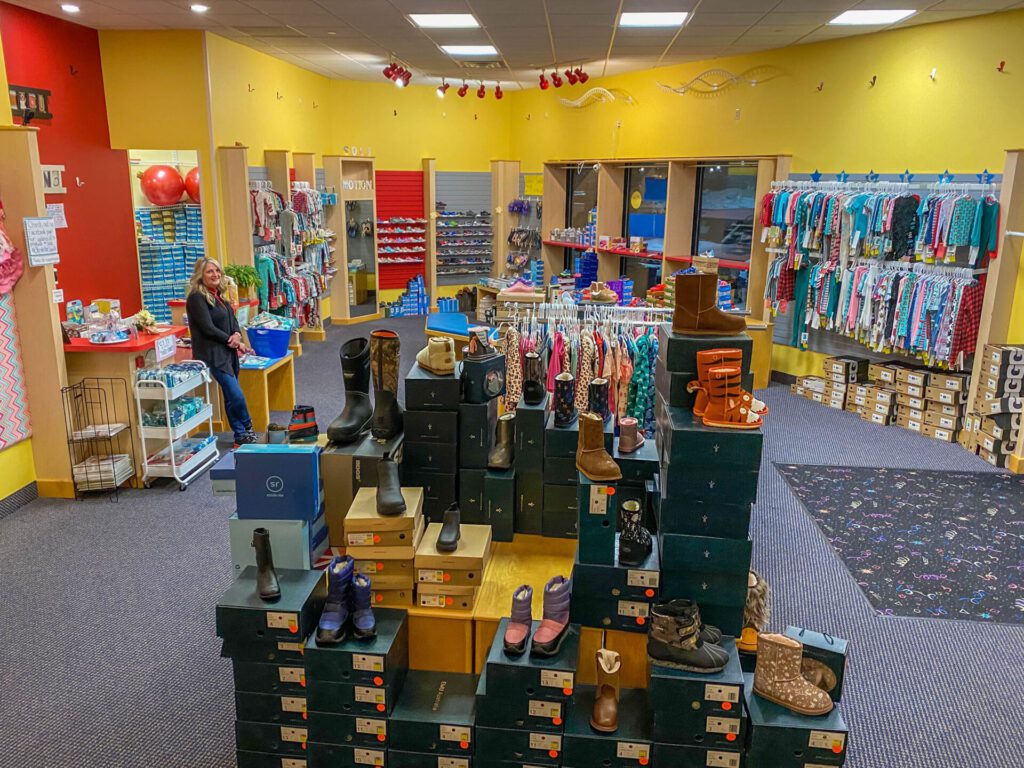Jodi’s Journal: The big squeeze of 2023
Jan. 22, 2023
As predictably as its cold, dark days, January delivers business closures.
This month is no exception, and they are among my least favorite interviews.
But the conversations are important. So when I heard Tami Lien was closing Stride Rite after 35 years in Sioux Falls, I knew she deserved to be recognized and that we as a business community needed to know what made her close the doors.
“It’s just everything,” she told me in an emotional, candid conversation.
“I can’t keep burying myself in debt because I love what I do and can’t walk away.”
By “everything,” she really does mean everything. It, of course, was the pandemic, which essentially cut off business overnight. Then, it was the supply chain disruption, forcing her to wait more than 10 months for shoes to arrive.
Naturally, she faces the same staffing challenges and overhead increases as anyone.
But she also increasingly can’t compete with lower cost e-commerce options and customers who browse her store only to buy online.
“Honestly, this is no joke,” she said. “They use us … and take myself or my staff’s time trying all kinds of shoes on, and they’ll come and say they just bought the shoes online and walk out. I can’t even fathom doing that to someone, but that’s the world nowadays.”

It was a similarly sad conversation with Wendy Haugen, who is closing Kids & Kaboodle Consignment Shop after more than 30 years. Her already tight margin couldn’t absorb an escalation in her rent.
“We were crunching numbers until the cows came home, and it wasn’t viable,” she told me.
The early days of 2023 certainly seem to illustrate the squeeze placed on so many of us.
News last week that the city’s planned Unity Bridge downtown brought in a bid significantly over budget shouldn’t be surprising. I’ve talked with many in the public and private sector who are experiencing the same increases.
Someone commented to me the other day about paying more than $20 for a hamburger at the Downtown Burger Battle. Given some of the ingredients involved, I wasn’t shocked.
And people will pay it. Sometimes. They’ll accept the higher bid because the project is critical. They’ll suck it up and pay more for the airline ticket, the snowblower or the adult beverage.
But eventually, they tend to quit saying yes.
One of my more revealing conversations recently was with Casey Brown, who is an expert at pricing strategy. This is something we in business rarely talk about, and it’s far from a science.
But pricing your goods or services correctly is critical, and continually evaluating your approach to pricing is a must. I spoke with Brown to promote her upcoming appearance in Sioux Falls at the Prairie Family Business Association’s annual conference.
I understand, I told her, that businesses are being forced to raise prices to maintain margin given all the various outside-cost escalations. But is it actually possible to increase margin through pricing today?
Not only is it possible, she said, it’s happening.
“Most of the businesses that are best in class or better in class are actually gaining margin in this time rather than staying margin neutral because they’re very aggressive about both the timing, the speed and the amount they’re willing to ask for given inflationary pressures,” Brown told me.
“The companies getting squeezed the most are afraid of damaging customer relationships. The entire world is paying more for every single thing we buy than we did a year or two or five ago, so I would argue it’s an opportunity as the entire world is resetting itself on what market pricing looks like to participate in that reset rather than get left behind. Ask for more, go quicker, go bigger.”
I get it. It makes sense, thinking as a business owner. And I do think there is some opportunistic price increasing at play throughout business.
The counter to that, though, Brown continued, is what happens when inflation crosses into recession?
“What do we do then if you’re a business owner with ongoing increased costs as the market starts to soften, and customers hold cash and are being more conservative? That can cause market contraction for some businesses. So this is where what I would say it’s a very surgical and strategic execution of pricing strategy. Product by product, customer by customer, service by service to stay margin neutral without losing market share. You do have to prepare in a different way for what’s coming rather than what we’ve just been through, where the question hasn’t been as much ‘What does it cost?’ as ‘When can I get it?’”
However, the question is becoming “What does it cost?”
What does it cost to expand the business? To do the project? To hire the extra person? To go out to eat? To buy the new car?
What does it cost, even, to stay in business?
When the squeeze becomes too tight, the pain becomes real. It’s a natural part of economic cycles, but it feels a bit like it’s closing in.
The photo I used to illustrate this column is called “Icy Climb,” courtesy of Paul Schiller.

Both the image and the title seem to fit the times.
Fittingly, I had a conversation with Reggie Kuipers, president of Bender Commercial Real Estates Services, after I’d already written most of this column, and he used the same descriptor.
“It’s a year of transition,” he said. “We’ve been saying that for 2021 and 2022, and now they’re getting squeezed. And once earnings have gotten squeezed, the C-suite is making difficult decisions.”
And it’s not just the C-suite. It’s City Hall and small-business owners and leaders at all levels. The big squeeze of 2023 might be just beginning.
Jodi’s Journal: The icy road ahead
Source link





